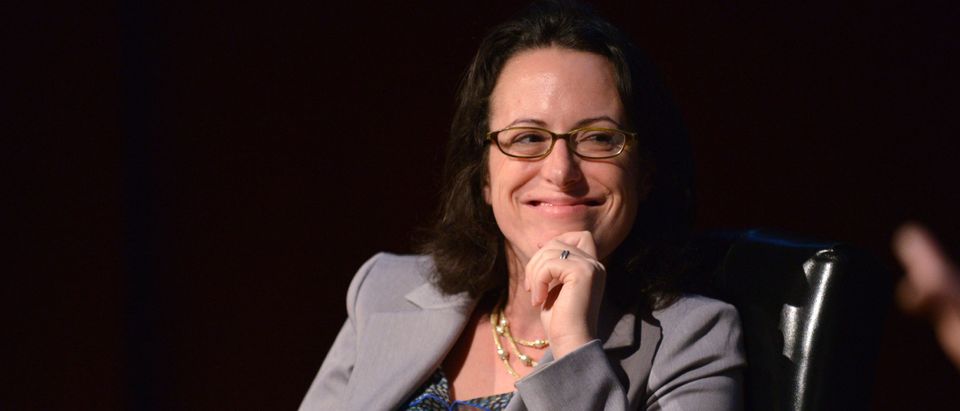Now that the coronavirus origin lab-leak theory is gaining credibility, members of the “follow the science” crowd are finally admitting they chose not to cover – or in some cases actively “debunked” – the theory because former President Donald Trump pushed it.
“It has become evident that some corners of the mainstream media overcorrected when it came to one particular theory from Trump and his allies: that the coronavirus emanated from a laboratory in Wuhan, China, rather than naturally,” Washington Post Senior Reporter Aaron Blake wrote in an analysis piece published Monday. “It’s also true that many criticisms of the coverage are overwrought and that Trump’s and his allies claims invited and deserved skepticism.”
And members of the media from various outlets have come out and stated their reluctance to cover the theory or desire to “debunk” it without evidence stemmed, in large part, from Trump’s alleged record of floating false claims.
J. Stephen Morrison, Center for Strategic and International Studies said in an NPR interview that the theory was dismissed not because of scientific evidence, but because it got grouped in with other “crazy” theories promoted by Trump.
“It got jumbled up together with some of the more crazy aspects of Trump, and scientists recoiled against that and went in favor of the theory that COVID-19 had emerged out of a natural process versus a lab escape.”
New York Times reporter Maggie Haberman said on CNN the reason the media didn’t take the issue seriously was because Trump and then-Secretary of State Mike Pompeo “refused to release the evidence” supporting their claim.
NYT’s @maggieNYT on the Wuhan lab leak theory: “Important to remember … then-Pres Trump and Pompeo both suggested they’d seen evidence this was formed in a lab … but they refused to release the evidence … because of that, that made this instantly political.” pic.twitter.com/r9zi1lJT74
— Tom Elliott (@tomselliott) May 25, 2021
“I think it is important to remember that part of the issue is when this was first being reported on and discussed back a few months after the pandemic had begun, was that then President Trump and Mike Pompeo, Secretary of State, suggested they’ve seen evidence that this was formed in a lab and they also suggested that it was not released on purpose. But they refused to release the evidence showing what it was and so because of that made this instantly political.”
CNN’s White House Correspondent John Harwood expressed a similar sentiment, arguing that while the lab leak theory could be plausible, there was no evidence immediately available and that Trump was trying to deflect from “the performance of the administration.”
Flashback: CNN’s @JohnJHarwood mocks Trump for suggesting Covid resulted from a Chinese “lab accident.”
“Trump is that he’s running for re-election and is looking for ways to deflect blame for the performance of the administration” pic.twitter.com/caoWV0dLh8
— Tom Elliott (@tomselliott) May 24, 2021
“The Trump administration’s messaging was often accompanied by anti-Chinese rhetoric that made it easier for skeptics to ignore its claims,” The Washington Post’s Glenn Kessler wrote. Kessler also appeared to insinuate that Trump’s claim was ignored because his track record of pushing other conspiracies.
“The Trump Admin and rw media slathered Covid and its origins in self-protective misinformation, conspiracies and lies from the start. To pretend the lab leak hypothesis was put forward in good faith by honest actors and ignored by journalists is revisionist bs,”said Deputy D.C. Bureau Chief at Vice News Todd Zwillich.
Zwillich added that “if the lab leak hypothesis proves to have merit now, journalists are late to it mostly because of healthy skepticism of being used in propaganda, and a lot less because of bias.”
If the lab leak hypothesis proves to have merit now, journalists are late to it mostly because of healthy skepticism of being used in propaganda, and a lot less because of bias.
— Todd Zwillich (@toddzwillich) May 24, 2021
Numerous outlets laid the theory to rest when it was still unfashionable by claiming there was no evidence available to support the theory. The New York Times published a piece in February of 2020 criticizing Republican Arkansas Sen. Tom Cotton for repeating “Fringe Theory of Coronavirus Origins.”
“The conspiracy theory lacks evidence and has been dismissed by scientists,” the report read.
Cotton told Fox News it’s unclear where the virus originated from and that it was important to find the origin.
“We don’t know where it originated, and we have to get to the bottom of that. We also know that just a few miles away from that food market is China’s only biosafety level 4 super laboratory that researches human infectious diseases.”
“Now, we don’t have evidence that this disease originated there, but because of China’s duplicity and dishonesty from the beginning, we need to at least ask the question to see what the evidence says. And China right now is not giving any evidence on that question at all,” Cotton continued.
The Washington Post reported on Cotton’s statement, publishing a piece entitled “Tom Cotton keeps repeating a coronavirus conspiracy theory that was already debunked.”
Despite the numerous claims that there was no evidence, there was, in fact, evidence floating around. (RELATED: Media Downplayed Or Ignored These 8 Lab Leak Theory Facts For Over A Year)
The Washington Post published an opinion piece by Josh Rogin in April 2020 revealing the State Department sent two cables in 2018 that warned the Wuhan Institute of Virology had safety and management issues. One cable allegedly said the lab’s work on bat coronaviruses risked causing a new pandemic.
Shi Zhengli, China’s top virologist on bat-borne viruses told the Scientific American in March of 2020 that she also initially thought the virus was due to an accidental leak from her Wuhan lab.
Meanwhile, a researcher at the South China University of Technology published a paper on Feb. 6, 2020 that said “the killer coronavirus probably originated from a laboratory in Wuhan.” The paper was later removed.












